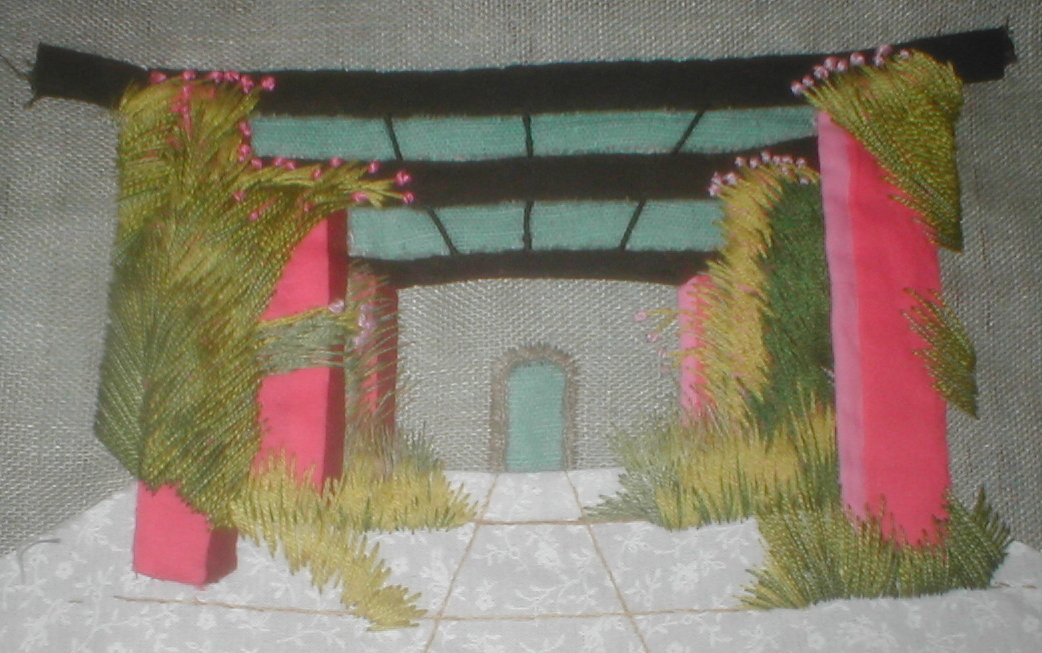The brief for the exhibition was to produce a piece of work inspired by a book, possibly though not necessarily by its seventeenth page. My chosen book was Villages de Normandie ISBN 2-36930-340-0.
Curiously enough, I did not buy it in Normandy, but found in in a National Trust second hand book shop. This book contains pictures of buildings and gardens in Normandy and page 17 is given over to Le bois des Moutiers at Varengeville-sur-Mer, which I have visited a couple of times. It is a house designed by Edwin Lutyens with a garden partly by Gertrude Jekyll. This includes a rose pergola which is depicted on page 17.
I found the image instantly appealing because of the perspective (suggestive of Restoration theatre) and the effects of light and shade. The challenge which I set myself was to show the depth of the recession by visual means rather than by literally constructing a three-dimensional piece (the brief did not allow this beyond a very limited extent).
The foundation of the piece consisted of three layers - Stitch-n-tear with the basic lines of the design drawn on it (most, though not all, of this was removed when the embroidery was finished), covered with a layer of green muslin, and then a piece of unbleached linen from a shop in Varengeville-sur-mer (this part of Normandy is a flax-growing area, so this is a local product which I wanted to incorporate).

The first picture shows the initial stage of the work - the drawn lines show through the fabrics on top, and the first actual embroidery is the making of the doorway at the end of the pergola. The arch is buttonholed and the linen cut away to reveal the green underneath.
After this the construction of the pergola began, using applied cotton fabrics - a mottled white for the paving, brown for the wooden horizontal bars, and pink for the brick pillars (three shades to indicate the basic colour with sunny and shaded parts).

The second picture shows the first part of the pergola in place, with some greenery added in fine threads ('sulky' cotton and one strand of stranded).

In the third picture the second layer has been added, with greenery in two strands of stranded cotton. In the space between the horizontal bars the linen has been cut away to reveal the green muslin, and buttonhole bars worked across the gap.

In the fourth picture the process has been repeated for the next layer, again using slightly thicker threads, and roses have begun to appear (french knots in no.5 perlé).

In the fifth picture the next layer has been added, by now with very much thicker threads (no.5 perlé and the like).

In the final picture the foliage is formed mostly from knitted cords which are applied to the surface - at least this avoids having to stitch through the cotton with very thick threads! French knot roses are worked into and around the cords.
Stray edges of fabric are trimmed and neatened, and the whole work is stretched over a piece of card. In accordance with the guidelines for the exhibition, the mounted piece is glued to a box canvas (painted with dark green acrylic) and mirror plates for display purposes are attached to this.
